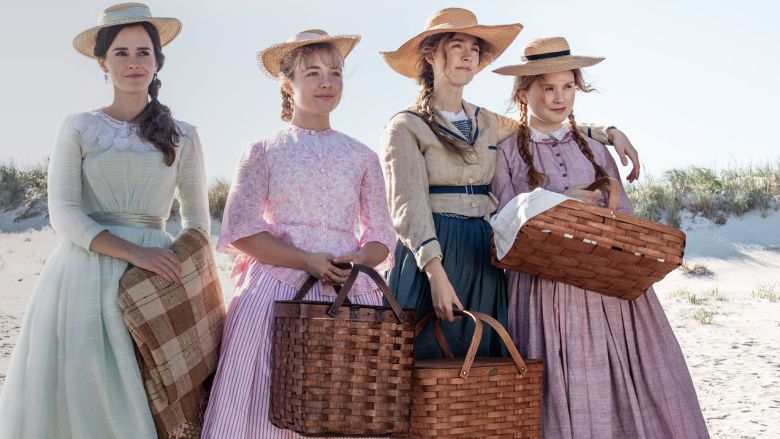Gerwig’s Radical Adaptation Reinvents “Little Women”
Fans Fall in Love Once Again With the Classic Tale on the Big Screen
Watson, Ronan, Pugh and Scanlen portray the four sisters from Alcott’s “Little Women.”
Although there have been many renditions of “Little Women,” director Greta Gerwig’s new adaptation truly captures the essence of Louisa May Alcott’s world. While the film authentically encapsulates the 19th-century setting, it also adds a 21st-century twist to the novel. Gerwig’s film is a box office hit, and has grossed over $107 million worldwide since its Christmas Day release. Additionally, the film earned six Academy Award nominations for the upcoming Oscars ceremony.
The movie introduces the March sisters as young women living in Concord, Massachusetts. The rest of the film follows a non-linear method, switching back and forth from the characters when they were younger to their lives as adults. Throughout the film, the audience sees the underlying story of Jo’s writing aspirations, which give subtle hints to Alcott’s life.
Using this artistic license, Gerwig showcases each character’s growth through parallels between the March sisters’ playful teenage years and their more somber, serious futures. By cutting from devastating scenes of Beth’s (Eliza Scanlen) funeral to Meg’s (Emma Watson) wedding, Gerwig shows the different events in the March family’s life that contribute to their coming of age.
Likewise, the film’s art direction conveys the change between childhood and adulthood as the past scenes have warmer lighting and a comforting feel, whereas the scenes set in the present have cooler tones which create a more solemn aura. Another difference is that Aunt March plays a much larger role in the 2019 film than in the novel. Instead of someone who is talked about, but rarely seen, Aunt March (Meryl Streep) provides comic relief while also helping the sisters make important decisions.
Throughout the film, Gerwig effectively sets the scene of 19th-century Massachusetts. The costumes, props and scenery are all visually stunning, and every scene is rich in detail with nods to Alcott’s hometown. The warm, inviting interior of the March household effectively encapsulates the whimsy of childhood, while Jo’s harsh, uninviting New York apartment demonstrates the realities of adult life.
Along with an enchanting set, the star-studded cast brings the story together on the screen. In her portrayal of Amy, Florence Pugh makes the brat of the family a more likeable character and the heroine of her own story. Pugh showcases Amy’s character growth by giving her relatable motivation behind her actions, which earned her an Oscar nomination for her work in the film. Additionally, while Beth has a small role in the novel, Scanlen’s performance as the ailing brings depth and emotion to the film.
After previously acting opposite one another in Gerwig’s 2017 film “Lady Bird,” Saoirse Ronan and Timothée Chalamet return as best friends Jo and Laurie. Their chemistry is undeniable—Gerwig described the pair’s energy as a “bonfire” to People Magazine. As friends, their charisma is infectious; however, their friendship complicates as the two grow up. The scenes between Jo and Laurie are beautiful, yet heartbreaking.
In addition to its heartwarming and tear-jerking scenes, this adaptation presents a feminist take on Alcott’s story. When Jo declares, “I’m sick of being told that love is all a woman is fit for,” she addresses a principal theme in the film: women have more to offer the world than marriage and motherhood. The film suggests that while the March sisters may want different things in life, they are all valid in their decisions.
Therefore, Gerwig skillfully captures the heart of the beloved story while updating it for a modern audience, proving that Alcott’s classic story is relevant centuries later.

Catherine McLellan, class of 2021, is the Lifestyle Editor and the Assistant Managing Editor for The Searchlight. At WHS, she is a captain of the cross...











